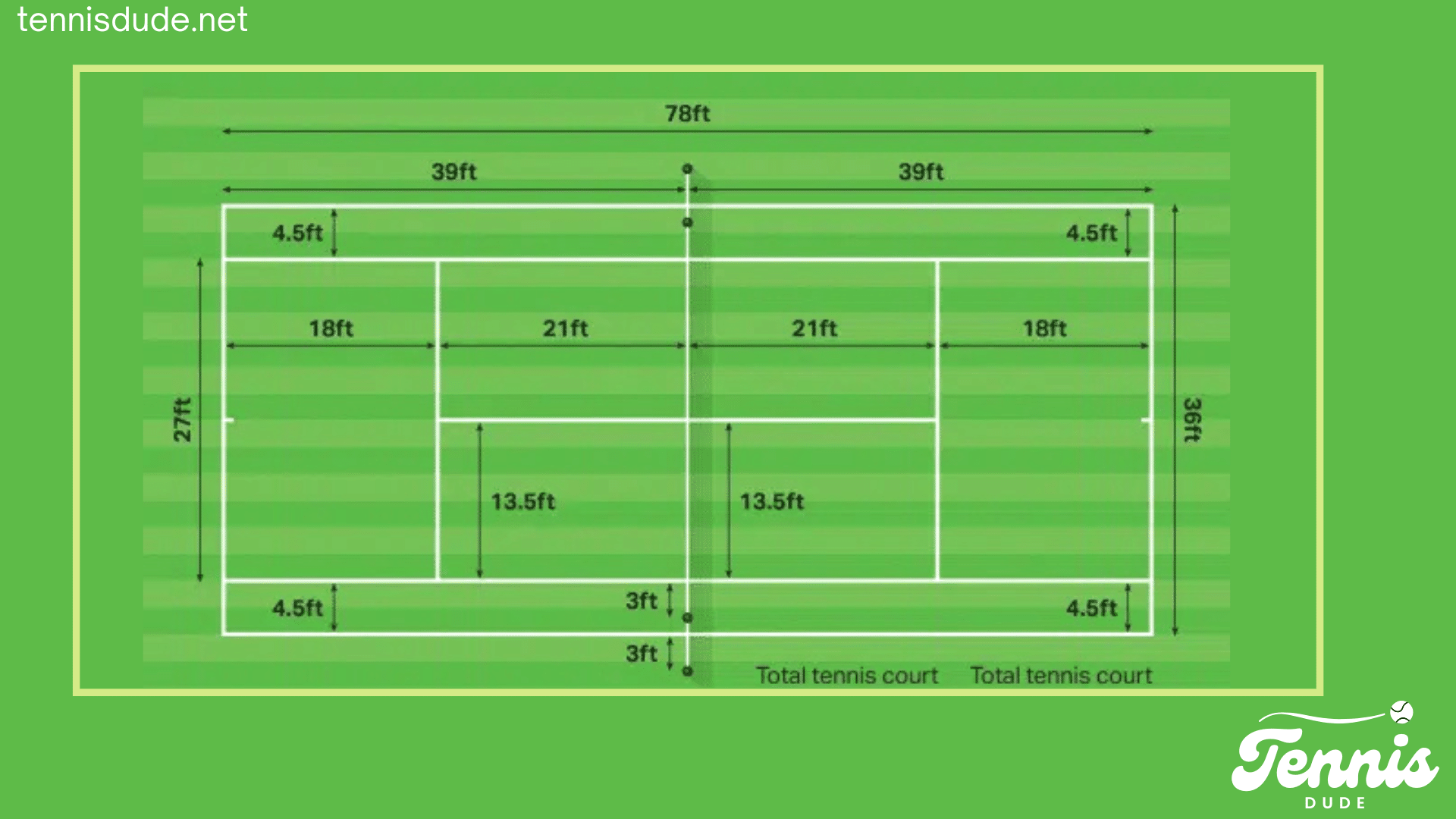Table of Contents
Imagine stepping onto a tennis court where every line, measurement, and angle harmonizes to create the perfect playground for champions. The court’s dimensions are not just markings on the ground—they’re the silent architects of the game, ensuring fairness, strategy, and precision in every serve and volley. Whether you’re a seasoned pro or a weekend warrior, understanding perfect tennis court dimensions isn’t just about rules; it’s the secret to unlocking your best performance and the essence of proper play.
But there’s more to these lines than meets the eye. From the baseline that challenges your stamina to the net that tests your finesse, every inch of the court has a purpose. These dimensions dictate the flow of the game, shaping tactics and ensuring that every player, regardless of skill level, plays on equal footing. Whether you dream of mastering your backhand or simply enjoying a casual match, knowing the science behind the court transforms the way you experience the sport. Ready to step into the details that make the game perfect? Let’s dive in!
Court Length
Standardized tennis court dimensions provide uniform gameplay and fair play. For singles matches. A typical tennis court is 78 feet long and 36 feet wide; for doubles matches, the breadth rises to 78 feet and 27 feet. These measurements for a tennis court provide players enough room to demonstrate their abilities while yet following rules.
A key component of tennis court dimensions is court length. Which gives players enough space to move about and participate in exciting rallies. The whole tennis court surface, made of clay, grass, hard court, or synthetic material, is called the playing area. Every terrain has different obstacles and features that affect gameplay and strategy.
The length of a tennis court, in combination with its other dimensions. Essentially creates the conditions for exhilarating matches in which players and spectators alike experience unforgettable moments as agility, quickness, and strategy come together on the court.
Court Width
The dimensions of tennis court are crucial in determining how the game is played. A typical tennis court is 78 feet long by 36 feet broad for singles matches. For doubles matches, the dimensions are somewhat larger, measuring 78 feet by 36 feet for each half. When it comes to strategic positioning during rallies and serves, the court’s width significantly impacts gameplay.
The service line, 21 feet from the net, is a key reference point for measuring the court’s width. In addition to marking the region where serves must land. This boundary also serves as a point of reference for players to determine where they should be placed during play. Apart from the serve, players’ precision and agility are required because the court’s width impacts shot angles, footwork, and court coverage.
Essentially, the tennis court’s width, along with other dimensions, creates the tactical subtleties and difficulties of the sport, giving each match additional levels of ability and strategy.
Net height
In tennis, the net height is an essential element that shapes the tactical movement on the court and anchors the play dynamics. Strictly regulated. The net height is a unifying factor for different tennis court sizes, whether hard courts at the US Open or Wimbledon’s grass courts. The net, usually positioned in the middle at a consistent height of 3 feet 6 inches (1.07 meters). It is an essential barrier that divides the field of play into separate regions where competitors can establish their superiority.
The net is a constant in the complex fabric of tennis court dimensions. Stretching the entire court width and requiring players to play with precision and grace. Whether players are navigating the expansive areas of a regular court or the more close quarters of a doubles court. One constant obstruction that requires deft movement is the net.
The net height is still significant on verdant grass courts where the history of the game blends with current athleticism. It is a symbol of tradition in the modern sports world. Whatever the surface type clay, grass, or hardcourt. The net height acts as a common denominator, an unchangeable feature of the game that cuts across several tennis environments. \
if you want to dive deep in the tennis court net height lets view this detailed article.
Service Line
On a tennis court, a service line is an essential border that defines the service area’s perimeter. This line indicates exactly where players must stand to serve and receive serves in the court’s intricate layout, and it is strategically vital. Understanding its placement is fundamental for players who master the game’s subtleties.
Specific guidelines established by regulatory organizations such as the International Tennis Federation (ITF) govern the size of tennis courts, including the service line. These rules state that a typical tennis court is 78 feet (23.77 meters) long and 27 feet (8.23 meters) wide for singles matches, with slightly different dimensions for doubles play. The service line, which runs parallel to the net and defines the service boxes on either side, divides the court into two equal halves.
To serve, a player must step past the baseline, make sure the ball crosses the net diagonally, and land inside the opponent’s service box. There is an error if this isn’t done. Thus, the service line is an essential marker that determines the validity of serves and the tempo and direction of play. Furthermore, because players try to take advantage of the court’s dimensions to obtain an advantage over their rivals.It is crucial in deciding court placement and strategy.
Baseline – The Backbone of Tennis
The baseline is the actual and figurative basis of the game in tennis. It is positioned parallel to the net and marks the boundary between the receiving and serving zones, essential for singles match dynamics. Its importance goes beyond its geographical function; it affects player placement, shot selection, and strategy.
To maintain uniformity and fairness during matches. Tennis courts have standard measurements, which include the width of the doubles alleys and the distance from the net. The court’s dimensions are determined by how close the baseline is to the net. Thus, players must be agile and precise to move around the area efficiently.
The baseline is the battlefield for singles matches, when players move between offense and defense. From this vantage point, players must learn how to control rallies using strong groundstrokes or strategically placed shots to control play. On the other hand, defense becomes offensive when defenders use the baseline to recover shots and counterpunch.
The Importance of the Baseline
- Foundation of Strategy
- Controls the pace of the game.
- Enables both aggressive and defensive play styles.
- Platform for Powerful Groundstrokes
- Allows for generating power and topspin.
- Facilitates depth and precision in shots.
- Enhancing Court Coverage
- Optimizes retrieval of deep shots.
- Supports transitions and wide-angle coverage.
- Key to Adaptability
- Enables performance on various court surfaces (clay, hard, grass).
- A Mental Battleground
- Tests patience, resilience, and focus during rallies.
Conclusion
Tennis court dimensions are more than just numbers—they are the blueprint for a game steeped in strategy, precision, and athleticism. From the baseline to the net height, each measurement serves a purpose, harmonizing gameplay for fairness and excitement. The court length and width define the space for thrilling rallies, while the service line and net height challenge players’ precision and tactics. Whether on clay, grass, or hardcourt, these standardized dimensions ensure that every match, whether singles or doubles, unfolds as a test of skill and endurance. Understanding these elements not only enriches your appreciation of the game but also elevates your performance, making tennis a timeless sport of strategy and grace.







